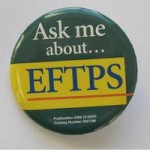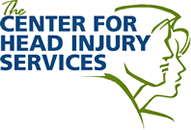
It’s hard to believe that someone would steal a child’s identity, but it happens all the time.
I’ve been posting a lot of last minute tax tips for people who have excess money to donate to charity or invest in retirement plans. Somebody asked me, “What about the rest of us? Do you have any good tax tips for people who don’t make a lot of money?” To be honest, I don’t have as many tips there. If you’re income is low enough that you wind up not paying income tax, you don’t need a lot of strategies for sheltering your income. But that said, you do want to make sure that you protect what’s coming to you and I can help with that.
This is the time of year when I hear the question, “My son’s father wants to claim him on his tax return but he doesn’t have custody and doesn’t pay child support. How can I stop him?” Usually these questions are about the Earned Income Credit (EIC.) When you combine EIC with the child tax credits, you can potentially have over $6,000 in tax refund money. It’s no wonder that people fight over who claims the children. Be sure to know the rules before you file.
In order to qualify to claim an Earned Income Credit, your child must meet three tests:
Relationship: son, daughter, stepchild foster child, brother, sister, half brother, half sister, step brother, step sister or a descendant of any of them, and
Age: the child must be younger than the person claiming EIC and under age 19 (or under age 24 if a full time student) or be any age if permanently and totally disabled at any time during the year, and
Residency: the child must have lived with the taxpayer in the United States for more than half of the tax year. If you are in the military and stationed overseas, that counts as a temporary absence and you qualify as living with your child for the time that you are on active military duty.
The residency requirement is the one that’s going to prevent the absentee father from being allowed to claim the child. Now that doesn’t mean he’s not going to try—there’s between $12 and $14 billion of EIC fraud every year. But if you are the custodial parent, you should be claiming your child on your tax return.
Let me say something here are relationship. “Stepchild” means that you married the child’s biological parent. If you are just living with someone, even if you’ve been together for 10 years, you are not legally considered to be a “stepparent”. A “foster child” means that the court placed a child in your home. You have legal paperwork stating that you are the “foster parent”. It does not mean someone that you care for and care about. (At least not for IRS purposes.)
So how do you make sure that no one else claims your child on your return?
Protect your child’s identity: I cannot stress enough how important it is for you to protect your child’s social security number. Especially this time of year, there is a lot of child identity theft. Most of the time, if someone steals your child’s identity, it’s someone you know, but I once dealt with a case where a thief was stealing baby ID’s from the hospital. The tax windfall from an Earned Income Credit (EIC) can be pretty large, and it makes people do bad things. If an identity thief has your child’s social security number, date of birth, and the correct spelling of the name, they’ve got you. The social security card has two out of three. Keep it safe.
If someone does claim your child illegally, (you’ll know because your tax return will be rejected when you try to electronically file it) fight back. If you are in the right, go ahead and file your tax return exactly the way you’re supposed to; claiming your child and all the tax credits you are entitled to. You will have to mail the tax return in and it will make for a horrible delay in processing your refund. But the identity thief will get audited, you will win your case and you will get your money. If you are not in the right, do not waste your time. You will be audited too. You’ll get 11 (sometimes 22) pages worth of questions you have to answer to prove you really do have custody of your child. If you’re legit it’s easy, if not it’s a nightmare.
Some people will electronically file their return to get whatever refund they can first and then file an amended claim to add their child. If possible, file the return correctly in the first place. It gives you a stronger case in the IRS’ eyes and it will actually be processed faster than if you do the amendment.
One piece of advice I saw on a message board about this was to “Go ahead and file your return before he does, even if it’s wrong so that you beat him to it.” Although filing your return as soon as possible will help prevent someone else from claiming your child, you need to know that it is illegal for a professional to e-file tax returns without having the actual W2s. You’d be amazed at how often the final check stub is a little different from the actual W2. Don’t file until you have everything you need.
In an ideal world, you wouldn’t have to be afraid of people stealing your child’s identity for financial gain. We’re not dealing with ideal though. Protect yourself and your child by keeping his social security card and other personal information safe.









